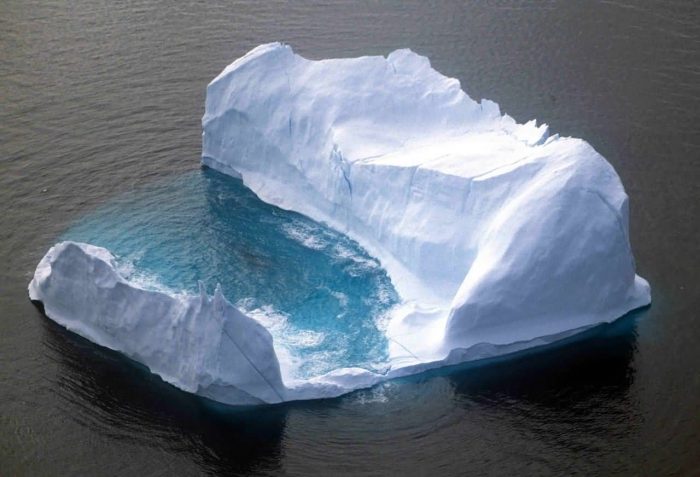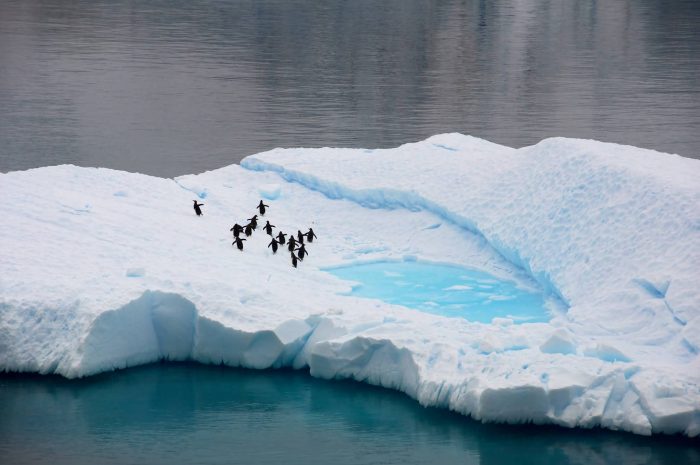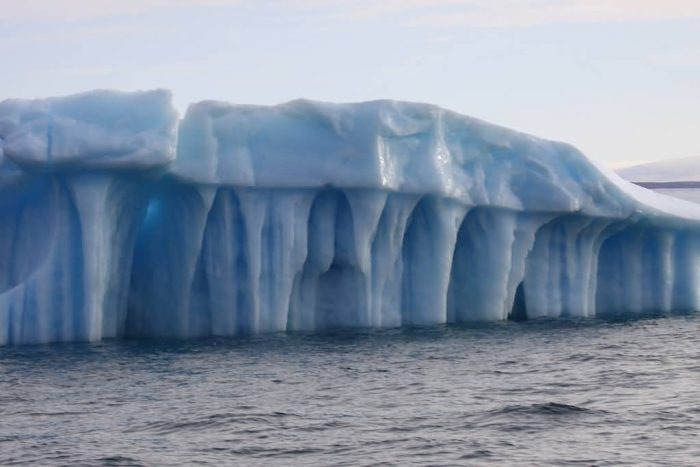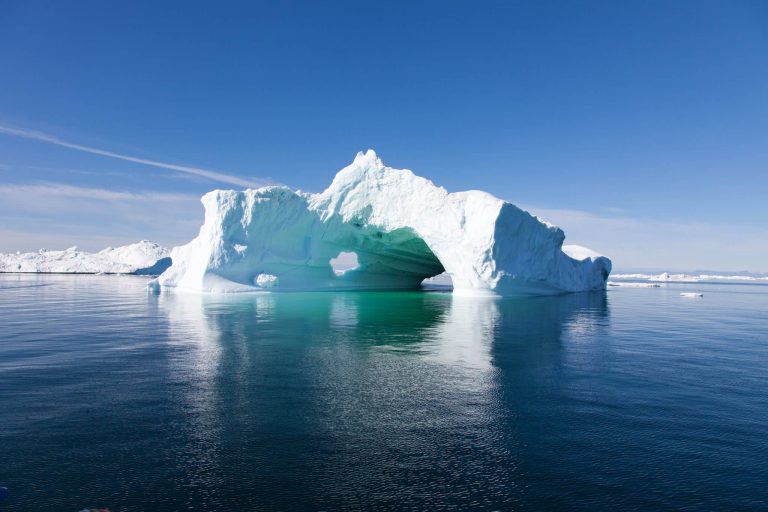An iceberg is a large piece of freshwater ice that has broken off a glacier or an ice shelf and is floating freely in open water. It may subsequently become frozen into pack ice. As it drifts into shallower waters, it may come into contact with the seabed, a process referred to as seabed gouging by ice. When a piece of iceberg ice melts, it makes a fizzing sound called “Bergie Seltzer”.

Ansgar Walk /CC BY-SA 2.5 | Iceberg
Icebergs can be classified on the basis of their shape. The two basic types of iceberg forms are tabular and non-tabular. Tabular icebergs have steep sides and a flat top, much like a plateau. This type of iceberg, also known as an ice island.

Peter Pawlowski /CC BY 2.0 | Iceberg
Antarctic icebergs formed by breaking off from an ice shelf, such as the Ross Ice Shelf or Filchner-Ronne Ice Shelf. These are typically tabular. The largest icebergs in the world are formed this way. Non-tabular icebergs have different shapes like Dome, Pinnacle, Wedge, Dry-Dock, Blocky etc.

Drew Avery /CC BY 2.0 | Iceberg



Connect with us